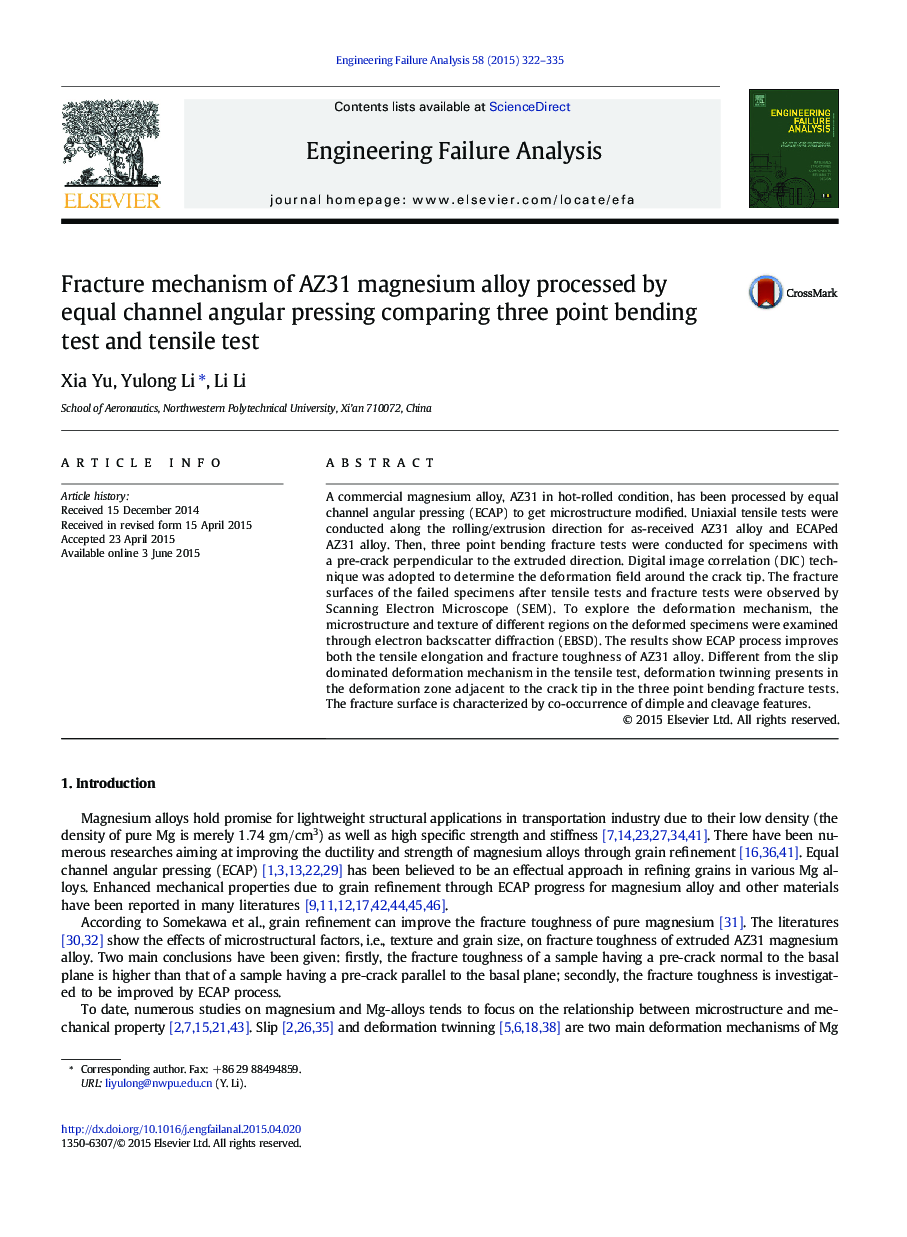| Article ID | Journal | Published Year | Pages | File Type |
|---|---|---|---|---|
| 768423 | Engineering Failure Analysis | 2015 | 14 Pages |
•Fracture toughness and tensile property of AZ31 were tested.•Grain size effects on fracture and tensile properties were discussed.•DIC was used in fracture test and numerical simulation was done.•Microstructure and texture were observed to explore the failure mechanism.•Comparison of the failure mechanism between tension and fracture was made.
A commercial magnesium alloy, AZ31 in hot-rolled condition, has been processed by equal channel angular pressing (ECAP) to get microstructure modified. Uniaxial tensile tests were conducted along the rolling/extrusion direction for as-received AZ31 alloy and ECAPed AZ31 alloy. Then, three point bending fracture tests were conducted for specimens with a pre-crack perpendicular to the extruded direction. Digital image correlation (DIC) technique was adopted to determine the deformation field around the crack tip. The fracture surfaces of the failed specimens after tensile tests and fracture tests were observed by Scanning Electron Microscope (SEM). To explore the deformation mechanism, the microstructure and texture of different regions on the deformed specimens were examined through electron backscatter diffraction (EBSD). The results show ECAP process improves both the tensile elongation and fracture toughness of AZ31 alloy. Different from the slip dominated deformation mechanism in the tensile test, deformation twinning presents in the deformation zone adjacent to the crack tip in the three point bending fracture tests. The fracture surface is characterized by co-occurrence of dimple and cleavage features.
